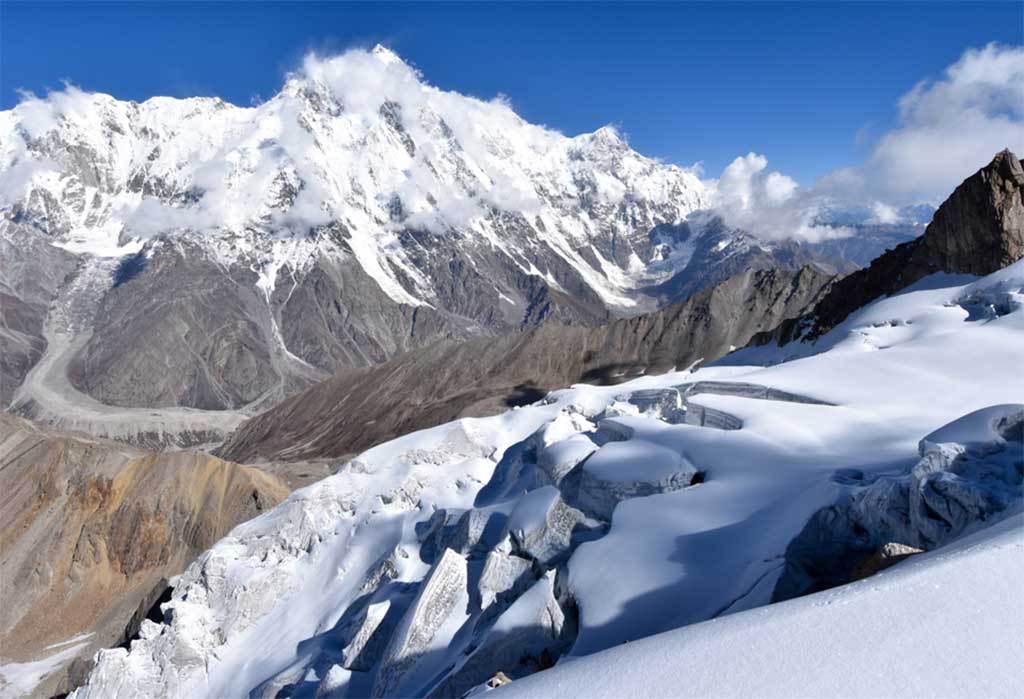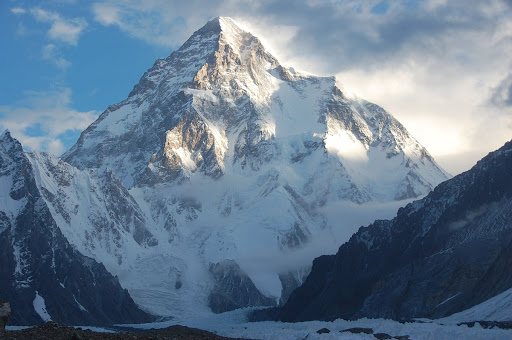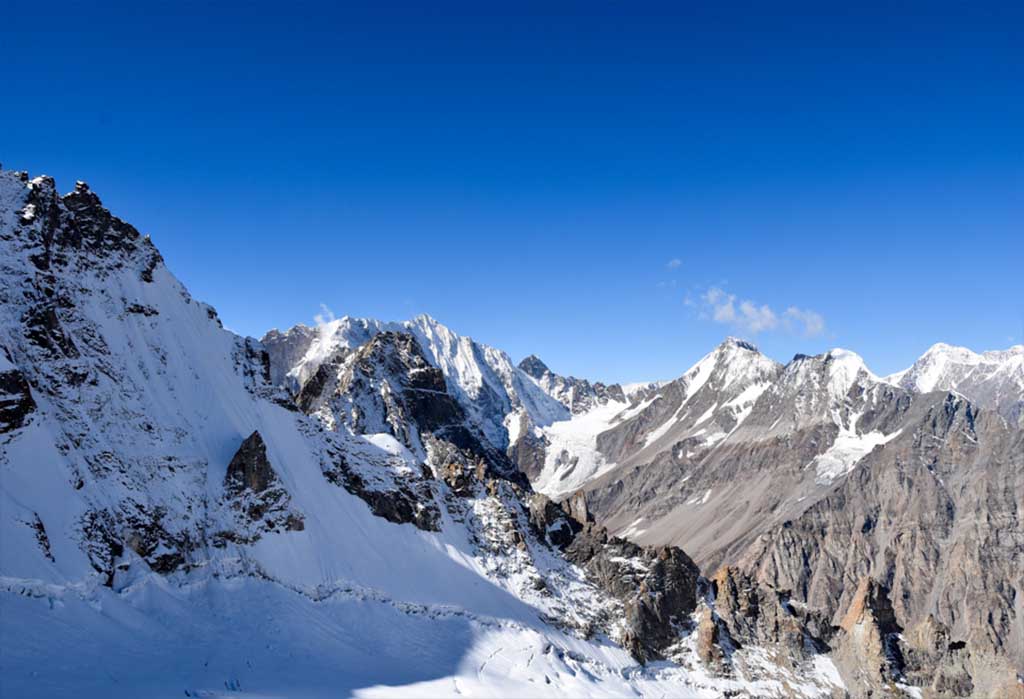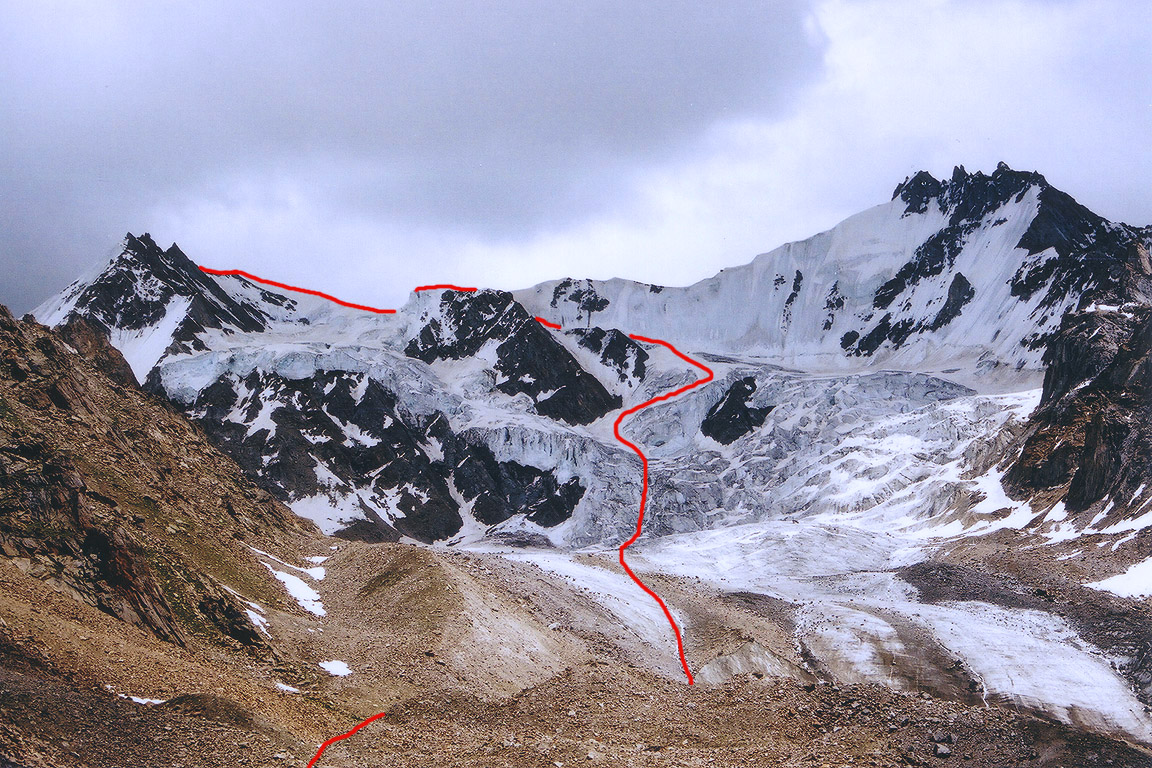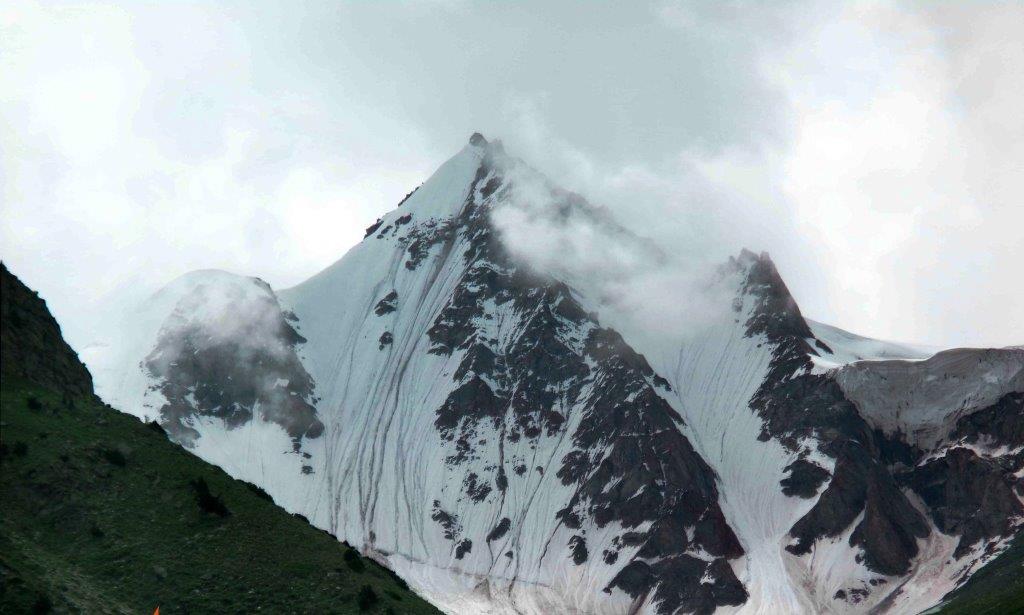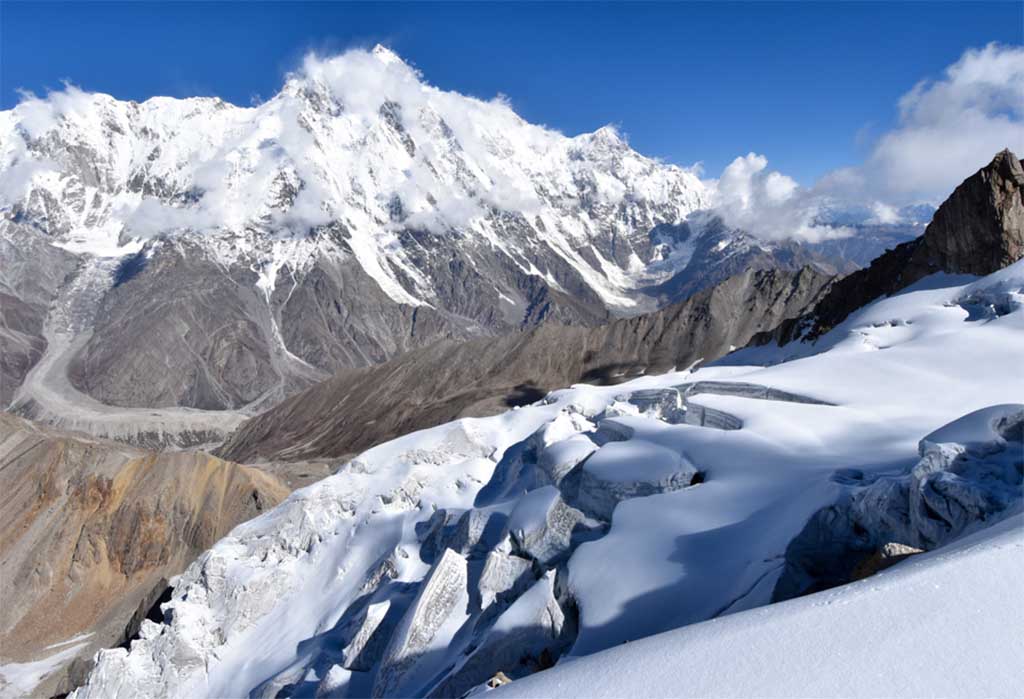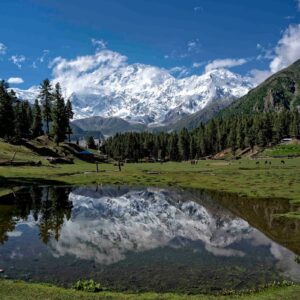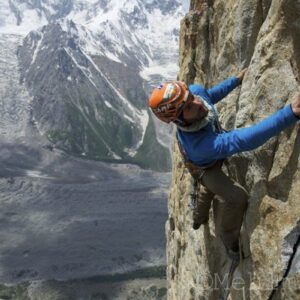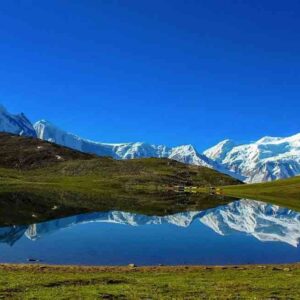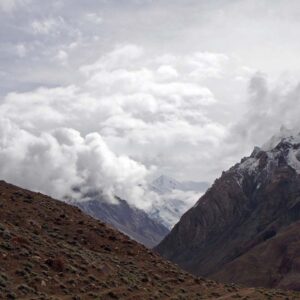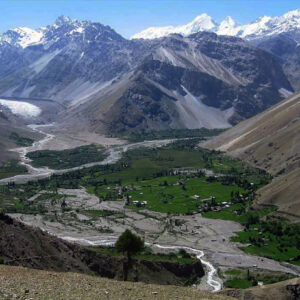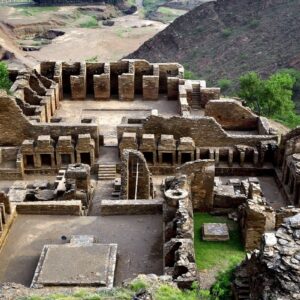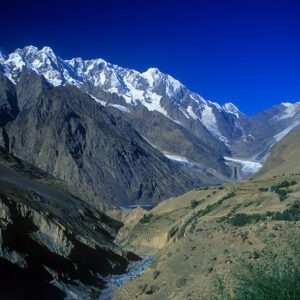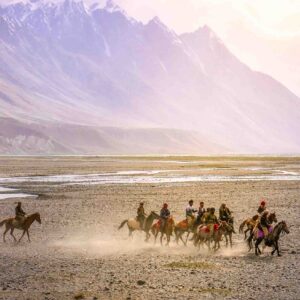Description
Welcome to the breathtaking landscapes of Rupal Peak, nestled in the heart of Pakistan’s Karakoram Range. At Pak Tours & Travel, we invite you to embark on an unforgettable Trek to Rupal Peak. Discover the rich cultural heritage, traditional hospitality, and awe-inspiring beauty of the Karakoram wilderness.
Nestled in the heart of the mighty Himalayas, Rupal Peak stands at an impressive 5970 meters, offering awe-inspiring vistas and a challenging climb for adventurous souls. It’s a lesser-known gem in the region of Gilgit-Baltistan, perfect for mountaineers seeking solitude and pristine landscapes.
Preparation Tips:
-
Physical Fitness: Ensure you’re in top physical condition. Climbing Rupal Peak demands stamina, strength, and high-altitude acclimatization.
-
Gear Up: Essential mountaineering equipment includes crampons, ropes, ice axes, and sturdy boots. Also, remember thermal clothing and high-quality sleeping bags.
-
Guides and Permits: It is advisable to hire a local guide for navigation and safety. Ensure you have all necessary permits before embarking on your journey.
Tourism Tips in Pakistan:
-
Respect the Culture: Always be respectful of local customs and traditions. Dress modestly and be mindful of local practices.
-
Local Cuisine: Savor traditional cuisine, but be careful with food hygiene, especially when dining at roadside eateries.
-
Connectivity: Mobile networks might be unreliable in remote areas. Inform someone about your itinerary and expected return time.
-
The Ultimate Trekking Adventure
The trek to Rupal Peak offers an unparalleled adventure, taking you through some of the most stunning landscapes in Pakistan. From the lush green meadows of Hushe to the rugged terrain of Rupal Peak, this trek provides a unique blend of excitement and natural beauty. Whether you’re an experienced trekker or a nature lover, the journey offers an experience like no other.
Why Choose Rupal Peak Trek?
- Unique Trekking Routes: Experience the traditional way of life by trekking through the mountains. The diverse trails and scenic routes offer a peaceful and immersive experience.
- Rich Cultural Heritage: Explore the ancient forts, vibrant bazaars, and traditional villages. Learn about the fascinating history and culture of the Karakoram region.
- Breathtaking Landscapes: Witness the stunning beauty of the Karakoram Range, from the snow-capped peaks to the vast glaciers. The diverse landscapes offer a visual feast for the eyes.
- Adventure and Relaxation: The trek combines the excitement of mountain trekking with opportunities for relaxation and exploration. Enjoy camping under the starry sky, hiking through scenic trails, and soaking in the natural hot springs.
Our Trekking Packages
At Pak Tours & Travel, we offer a variety of trekking packages designed to suit different preferences and durations. Our experienced guides are dedicated to ensuring your safety and providing you with an unforgettable adventure. Here are some of our popular packages:
- Short Trek
- Ideal for weekend travelers
- Includes a day of trekking and a visit to nearby attractions
- Perfect for a quick mountain escape
- Extended Trek
- Perfect for those with more time
- Includes multiple days of trekking and cultural tours
- Explore the region in depth and experience the local culture
- Ultimate Adventure
- Designed for the adventurous
- Includes a comprehensive itinerary with trekking, camping, and cultural experiences
- A full immersion into the Karakoram wilderness
Safety First
Your safety is our top priority. Our guides are highly trained and certified professionals with extensive knowledge of the local terrain. We provide all necessary safety gear and ensure that all activities adhere to strict safety protocols. Additionally, our team conducts regular equipment checks and route assessments to guarantee a safe and enjoyable experience for all participants.
Plan Your Adventure
Embark on a trek to Rupal Peak with Pak Tours & Travel. Our team is here to assist you with every aspect of your trip, from planning and logistics to guiding you through the adventure. Whether you’re traveling solo, with friends, or as part of a group, we ensure a seamless and memorable journey.
Contact Us
Ready to explore the majestic Rupal Peak trek? Contact Pak Tours & Travel today to book your trek. Our friendly and knowledgeable staff are available to answer any questions and help you create the perfect adventure. Reach out to us via phone, email, or visit our website for more information.
Itinerary
Spend the day exploring the city and visiting key attractions such as Faisal Mosque and Daman-e-Koh. Stay overnight in a comfortable hotel.
Spend the rest of the day acclimatizing to the altitude and exploring the local bazaars. Overnight stay in Gilgit.
Set up camp, relax, and start acclimatization hikes around the base camp area.
Exploring the beautiful Rupal Valley. Check your equipment and prepare for the climb.
Progress steadily, taking rest days as needed to acclimate properly. Make camp at higher altitudes each night.
Start early to reach the peak and enjoy the incredible panoramic views from the top. Descend back to base camp by evening.
Explore more of the surrounding area or simply relax.
Spend some time exploring more of Gilgit or relax before heading back to Islamabad.
Spend your final day in Pakistan souvenir shopping or exploring any missed attractions.
Fly or drive back to Islamabad from Skardu. Transfer to the hotel in Islamabad. Free time for shopping, sightseeing, or relaxation. Overnight stay in Islamabad.
Location
Faq
The best time to visit is from May to September when the weather is relatively stable and the routes are more accessible.
Yes, you'll need a climbing permit, which can be obtained through local tour operators or the Gilgit-Baltistan Council.
Generally, yes, but always check current travel advisories and ensure you have a reliable guide.
Accommodations range from basic guesthouses in nearby villages to camping sites at base camp. Ensure you book in advance during peak season.
The climb is considered moderate to difficult, requiring experience in high-altitude mountaineering. Proper preparation and acclimatization are crucial.
Essentials include climbing gear, thermal clothing, high-quality sleeping bags, first aid kit, water purification tablets, and high-energy snacks.
Medical facilities are limited in the region. It's advisable to carry a comprehensive first aid kit and necessary medications. Emergency services are available but may take time to reach remote areas.
Yes, hiring local porters can be a great help in carrying heavy loads and navigating difficult terrain. It's also a way to support the local economy.
You may spot a variety of wildlife including ibex, snow leopards, and various bird species. Always observe from a safe distance and do not disturb the wildlife.
